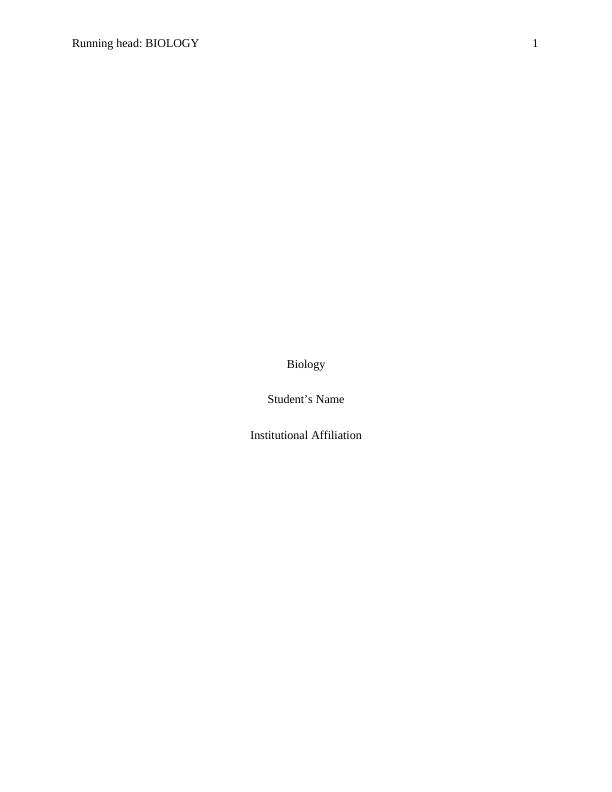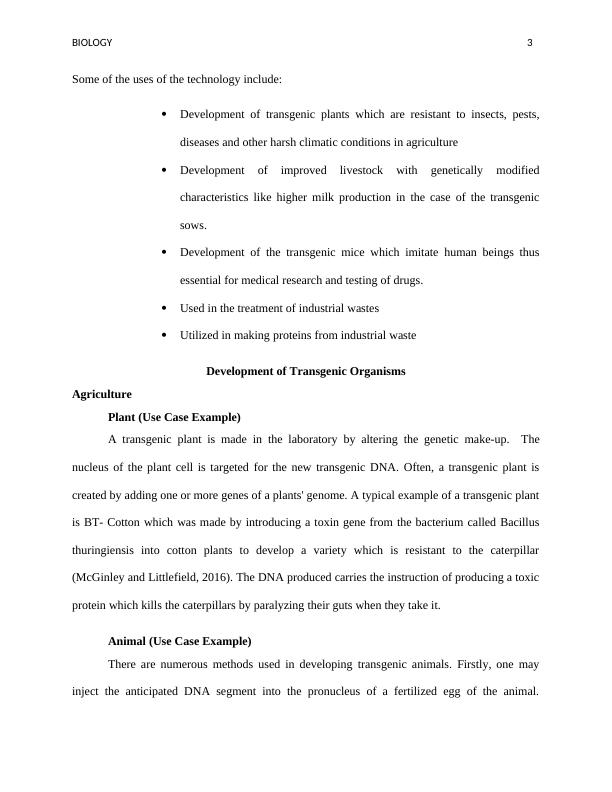Recombinant DNA Technology in Biology
7 Pages1360 Words361 Views
Added on 2023-04-08
About This Document
This essay discusses the concepts of recombinant DNA technology in biology, including techniques and applications. It explores the development of transgenic plants and animals, their uses in agriculture and medicine, and the benefits of using recombinant DNA. The essay also highlights the effects of recombinant DNA technology on biodiversity in agriculture.
Recombinant DNA Technology in Biology
Added on 2023-04-08
ShareRelated Documents
End of preview
Want to access all the pages? Upload your documents or become a member.
Questions related to DNA extraction
|5
|911
|139
Report on Genetically Engineered Foods
|4
|883
|111
Bioinformatics And Genetics
|8
|1509
|19
plant growth and development PDF
|5
|2715
|101
Impact of Industrial Biotechnology on Pollution Prevention and Resource Conservation
|14
|3688
|474
The recombinant DNA technology
|5
|1195
|17



